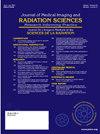Patient Perception of Care
IF 2
Q3 RADIOLOGY, NUCLEAR MEDICINE & MEDICAL IMAGING
Journal of Medical Imaging and Radiation Sciences
Pub Date : 2025-07-01
DOI:10.1016/j.jmir.2025.102061
引用次数: 0
Abstract
Aim
Singapore’s healthcare system faces challenges from aging demographics and cultural diversity, with 1 in 4 Singaporeans expected to be aged 65+ by 2030. Cultural beliefs influence trust, decision-making, and treatment adherence, shaping patient expectations. This study explores how cultural and generational factors impact outpatient experiences, comparing Asian and Western perspectives.
Methods
A mixed-methods approach was used, combining qualitative and quantitative data. An online survey, distributed from July 2024 to January 2025, gathered responses from 160 participants (80 Singaporeans and 80 from Australia, the UK, and New Zealand), aged 20–80, who had recent outpatient treatment. Purposive sampling ensured cultural diversity. The survey, adapted from established tools like the Picker Patient Experience Questionnaire (PPE-15), assessed patient expectations, healthcare professional qualities, and cultural influences. Data analysis included descriptive statistics and thematic coding.
Results
Of 96 responses, 66 were valid. Western participants exhibited higher trust in doctors but included a subset with total distrust, while Asian participants sought greater involvement in decision-making. Older patients showed the highest confidence in doctors. Privacy and comfort were key concerns, with younger patients emphasizing personal space. Many felt healthcare resources did not significantly improve treatment. Cultural beliefs influenced psychological well-being, with younger and middle-aged groups reporting stronger impacts, while seniors viewed cultural preferences as comforting. Asian participants emphasized psychosocial well-being, whereas Western participants prioritized individual autonomy.
Conclusion
The findings highlight the need for culturally responsive strategies, particularly in patient engagement and environmental design. Effective communication and quality healthcare environments are crucial for patient satisfaction. Future research should explore broader structural influences to provide culturally sensitive care and address barriers to health-seeking behaviors in Singapore’s multicultural society.
患者对护理的感知
新加坡的医疗保健系统面临着人口老龄化和文化多样性的挑战,预计到2030年,每4个新加坡人中就有1个年龄在65岁以上。文化信仰影响信任、决策和治疗依从性,塑造患者的期望。本研究探讨文化和世代因素如何影响门诊经验,比较亚洲和西方的观点。方法采用定性与定量相结合的混合方法。一项在线调查于2024年7月至2025年1月进行,收集了160名参与者(80名新加坡人,80名来自澳大利亚、英国和新西兰)的反馈,年龄在20-80岁之间,最近接受过门诊治疗。有目的的抽样确保了文化多样性。该调查改编自Picker患者体验问卷(PPE-15)等现有工具,评估了患者期望、医疗保健专业人员素质和文化影响。数据分析包括描述性统计和专题编码。结果96份问卷中,有效问卷66份。西方参与者对医生表现出更高的信任,但也有一部分人完全不信任医生,而亚洲参与者则更多地参与决策。老年患者对医生的信心最高。隐私和舒适是关键问题,年轻患者强调个人空间。许多人认为医疗资源并没有显著改善治疗。文化信仰影响心理健康,年轻人和中年人的影响更大,而老年人则认为文化偏好是一种安慰。亚洲参与者强调社会心理健康,而西方参与者则优先考虑个人自主权。结论:研究结果强调了文化响应策略的必要性,特别是在患者参与和环境设计方面。有效的沟通和高质量的医疗环境对患者满意度至关重要。未来的研究应该探索更广泛的结构性影响,以提供文化敏感的护理,并解决新加坡多元文化社会中寻求健康行为的障碍。
本文章由计算机程序翻译,如有差异,请以英文原文为准。
求助全文
约1分钟内获得全文
求助全文
来源期刊

Journal of Medical Imaging and Radiation Sciences
RADIOLOGY, NUCLEAR MEDICINE & MEDICAL IMAGING-
CiteScore
2.30
自引率
11.10%
发文量
231
审稿时长
53 days
期刊介绍:
Journal of Medical Imaging and Radiation Sciences is the official peer-reviewed journal of the Canadian Association of Medical Radiation Technologists. This journal is published four times a year and is circulated to approximately 11,000 medical radiation technologists, libraries and radiology departments throughout Canada, the United States and overseas. The Journal publishes articles on recent research, new technology and techniques, professional practices, technologists viewpoints as well as relevant book reviews.
 求助内容:
求助内容: 应助结果提醒方式:
应助结果提醒方式:


